Monomethyl fumarate
Synonym(s):Fumaric acid monomethyl ester;Methyl hydrogen fumarate
- CAS NO.:2756-87-8
- Empirical Formula: C5H6O4
- Molecular Weight: 130.1
- MDL number: MFCD00063174
- EINECS: 220-412-6
- SAFETY DATA SHEET (SDS)
- Update Date: 2025-01-27 09:38:02

What is Monomethyl fumarate?
Description
Monomethyl fumarate (MMF), a bioactive metabolite of fumaric acid ester, is an immunotherapy for psoriasis that causes decreased production of Th1 cytokines and lymphocytopenia. Monomethyl fumarate was shown to decrease DC response to LPS and decreased IL-12p70 and IL-10 production.
Chemical properties
Off-White Solid
The Uses of Monomethyl fumarate
Monomethyl fumarate is used to treat the relapsing forms of multiple sclerosis (MS), including clinically isolated syndrome, relapsing-remitting disease, and active secondary progressive disease. This medicine will not cure MS, but it may slow some of the disabling effects and decrease the number of relapses of the disease.
Fumaric Acid Monomethyl Ester is one of the most bioactive anti-psoriatic fumaric acid ester metabolite. Fumaric Acid Monomethyl Ester is potent nicotinic acid receptor agonist. Fumaric Acid Monomethy l Ester has also been shown to selectively stimulate of T helper 2 cytokine response.
Definition
ChEBI: Monomethyl fumarate is a dicarboxylic acid monoester resulting from the formal condensation of one of the carboxy groups of fumaric acid with methanol. Is is a metabolite of dimethyl fumarate and used for the the treatment of patients with relapsing multiple sclerosis (MS). It also induces the NFE2L2 (Nrf2) transcription factor by binding to KEAP1. It has a role as an immunomodulator, an antioxidant and a drug metabolite. It is an enoate ester, a methyl ester and a dicarboxylic acid monoester. It derives from a fumaric acid.
What are the applications of Application
mono-Methyl fumarate can be used as a reactant to synthesize:
Jumonji C domain-containing histone demethylases (JCHDMs) inhibitor.
(?)-Xylariamide A, a fungal metabolite.
(±)-Methoxyfumimycin ethyl ester, a potential bacterial peptide deformylase inhibitor.
It is also a wide spectrum antibacterial agent with a powerful antioxidant activity.
Preparation
Monomethyl fumarate was synthesized by maleic anhydride and methanol. monomethyl fumarate could inhibit the growth of mold, and the storage time of feed could be prolonged.
Synthesis Reference(s)
The Journal of Organic Chemistry, 23, p. 1559, 1958 DOI: 10.1021/jo01104a608
Biological Activity
Monomethyl fumarate is an active metabolite of the immune modulator dimethyl fumarate (Item No. 14714) that is rapidly formed from dimethyl fumarate by hydrolysis. It is an agonist of the hydroxycarboxylic acid 2 (HCA2) receptor/GPR109A with an EC50 value of 9.4 μM for inducing calcium accumulation in CHO cells expressing the receptor. Monomethyl fumarate reduces neutrophil adhesion to endothelial cells stimulated with TNF, decreases CXCL2-directed neutrophil migration, and increases the expression of the Nrf2 target gene NQO1 in wild-type but not HCA2-/- macrophages. It inhibits proliferation and induces differentiation in keratinocytes, as well as decreases the levels of TNF-α induced by phorbol 12-myristate 13-acetate (TPA; Item No. 10008014) in keratinocytes when used at a concentration of 1 mM. Monomethyl fumarate (1 mg/day) reduces symptoms of experimental autoimmune encephalomyelitis (EAE) in mice and isolated natural killer cells from these mice induced cytotoxicity in previously isolated immature and mature dendritic cells. Formulations containing monomethyl fumarate have been used in the treatment of multiple sclerosis.
Metabolism
Not Available
Clinical claims and research
Mono Methyl Fumarate (MMF) is an active component of Fumaria sp. methanolic extract. In Iranian traditional medicine, Fumitory is used widely as a remedy for several diseases including liver dysfunction. The effect of monomethyl fumarate and Fumaria extract was investigated by Moghaddam et al. (2012) against APAP-induced acute liver damage and compared to a known hepatoprotective plant, Silybum marianum and its active ingredient, SM. APAP produced acute toxicity at the dose of 640 mg/kg in mice while pretreatment and posttreatment of animals (i.p., twice daily for 48 h) with monomethyl fumarate, SM (25, 50, and 100 mg/kg) or the plant extracts (300 and 500 mg/kg) significantly lowered the rise of ALT, AST, LDH, ALKP, and bilirubin (total and direct) in serum. In addition, both the compounds and the plant extracts significantly increased GSH content and reduced MDA level of the liver.
Properties of Monomethyl fumarate
| Melting point: | 144-145 °C (lit.) |
| Boiling point: | 250.0±23.0 °C(Predicted) |
| Density | 1.37 g/cm3 |
| storage temp. | 2-8°C |
| solubility | Chloroform (Slightly), DMSO (Slightly), Methanol (Slightly) |
| form | Solid |
| pka | 3.40±0.10(Predicted) |
| color | Off-White |
| λmax | 209nm(MeOH)(lit.) |
| CAS DataBase Reference | 2756-87-8(CAS DataBase Reference) |
Safety information for Monomethyl fumarate
| Signal word | Warning |
| Pictogram(s) |
 Exclamation Mark Irritant GHS07 |
| GHS Hazard Statements |
H319:Serious eye damage/eye irritation |
| Precautionary Statement Codes |
P264:Wash hands thoroughly after handling. P264:Wash skin thouroughly after handling. P280:Wear protective gloves/protective clothing/eye protection/face protection. P305+P351+P338:IF IN EYES: Rinse cautiously with water for several minutes. Remove contact lenses, if present and easy to do. Continuerinsing. P337+P313:IF eye irritation persists: Get medical advice/attention. |
Computed Descriptors for Monomethyl fumarate
New Products
3-Iodophenylacetic acid 3-Pyridineacetonitrile, α-hydroxy- 2-Propanamine, 1-chloro-, hydrochloride (9CI) 3-(hexyloxy)-4-(pyridin-3-yl)-1,2,5-thiadiazole 2-Hexyn-1-ol Dibenzo-18-crown-6 Nickel(II) perchlorate hexahydrate, 98% 4-Bromophenylacetonitrile, 95% 3-Bromo-4-fluoroaniline, 97% Sodium tetraborate decahydrate, 98% Palladium(II) acetate, trimer, Pd 99% 4-Bromo-2-chlorotoluene, 97% N N Dimethylformamide Dimethyl Acetal (Dmf Dma) 2,3-Dichloro Benzoyl Cyanide [Side Chain] Bis(2-Chloroethyl) Amine Hydrochloride L-Glutamic Acid Diethyl Ester Hydrochloride 5-(Difluoromethoxy)-2-Mercaptobenzimidazole 1-Ethyl-3-(3-Dimethylaminopropyl)-Carbodiimide Hydrochloride [EDC Hcl] 1,4-Napthoquinone Bromoiodomethane Sodium Bicarbonate Methylene Dichloride (MDC) Ethyl Acetate Indole-3-Carbinol (I3C)Related products of tetrahydrofuran
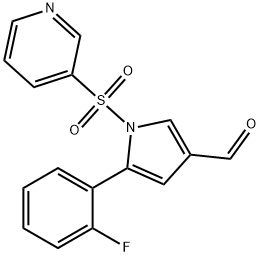
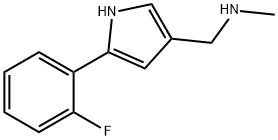

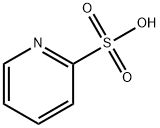
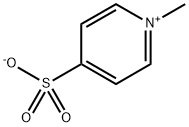


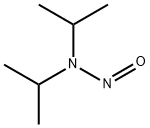
You may like
-
 Monomethyl Fumarate CAS 2756-87-8View Details
Monomethyl Fumarate CAS 2756-87-8View Details
2756-87-8 -
 Monomethyl fumarate 98% (GC) CAS 2756-87-8View Details
Monomethyl fumarate 98% (GC) CAS 2756-87-8View Details
2756-87-8 -
 Monomethyl fumarate 97% CAS 2756-87-8View Details
Monomethyl fumarate 97% CAS 2756-87-8View Details
2756-87-8 -
 mono-Methyl fumarate CAS 2756-87-8View Details
mono-Methyl fumarate CAS 2756-87-8View Details
2756-87-8 -
 mono-Methyl fumarate CAS 2756-87-8View Details
mono-Methyl fumarate CAS 2756-87-8View Details
2756-87-8 -
 2756-87-8 Monomethyl fumarate 98%View Details
2756-87-8 Monomethyl fumarate 98%View Details
2756-87-8 -
 2756-87-8 98%View Details
2756-87-8 98%View Details
2756-87-8 -
 132945-75-6 (S)-1-Boc-3-methanesulfonyloxy-pyrrolidine 98+View Details
132945-75-6 (S)-1-Boc-3-methanesulfonyloxy-pyrrolidine 98+View Details
132945-75-6
